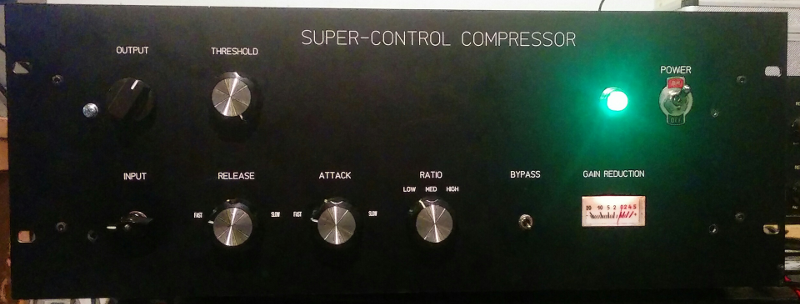Here's an RightMark Audio Analyzer test report http://www.kolumbus.fi/~kp5188/kompura/index.html
0 dBFS is +20 dBu but there's a 6 dB pad and and 600 ohm load resistor connected between the compressor and the sound card. Making 0 dBFS +26 dBu and the load for the compressor 600 ohms.
The frequency response is 1 dB down at 20 kHz which is good enough for me and I think good for the fairly low price of the transformers. The frequency response is -3 dB at 20 kHz to a 10k load. Distortion is also higher at 10k load. I'm going to add a 600 ohm resistor and a switch to connect the resistor to the output for the 99% of the time I'm not connecting the output to a 600 ohm load.
The noise figures aren't accurate because there's some low level hum, buzz and high frequency crap always present in my sound card. I think the reason for that is cheaping out on my computers PSU. But there actually is some very low level 50Hz and 100Hz hum that could be done away with better layout or transformer shielding.
Here's the noise spectrum of the sound card

0 dBFS is +20 dBu but there's a 6 dB pad and and 600 ohm load resistor connected between the compressor and the sound card. Making 0 dBFS +26 dBu and the load for the compressor 600 ohms.
The frequency response is 1 dB down at 20 kHz which is good enough for me and I think good for the fairly low price of the transformers. The frequency response is -3 dB at 20 kHz to a 10k load. Distortion is also higher at 10k load. I'm going to add a 600 ohm resistor and a switch to connect the resistor to the output for the 99% of the time I'm not connecting the output to a 600 ohm load.
The noise figures aren't accurate because there's some low level hum, buzz and high frequency crap always present in my sound card. I think the reason for that is cheaping out on my computers PSU. But there actually is some very low level 50Hz and 100Hz hum that could be done away with better layout or transformer shielding.
Here's the noise spectrum of the sound card





























